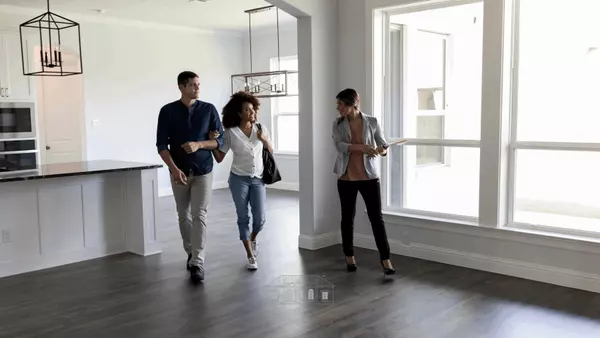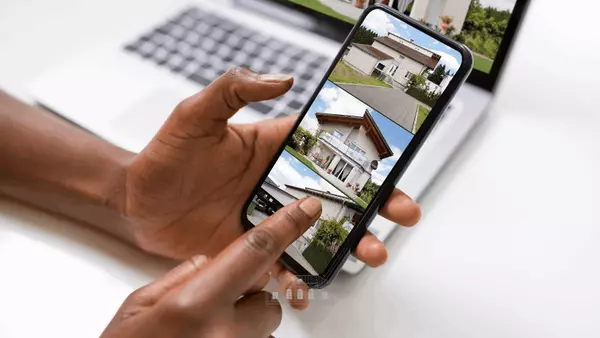7 Luxury Real Estate Market Trends
The luxury real estate market caters to a small but active buyer pool, and has distinct trends that set it apart from the real estate market as a whole. We’ve identified eight trends that highlight the main market movers in luxury real estate.
If you’re a newcomer, use these trends to learn how to break into the luxury real estate market. And if you’re an experienced homeowner, use them to decide how to expand your life of luxury — second home purchase, anyone? But first, how is luxury real estate defined?
What is luxury real estate?
Luxury real estate is a difficult label to pin down because its standards can change depending on the market. What may be considered luxury in a Midwest town may not meet the local standards of luxury for a West Coast city.
Typically, though, the luxury real estate market encompasses the top 5% to 10% of listings in a specific area. In large metro areas, high-end properties can be expected to list at $1 million or more. Major cities like New York have an even higher standard, beginning at around $4 million.
The property’s location, amenities and design all factor into the price point for that area. A property may be marketed as having one or two luxury amenities, but that doesn’t mean it’s worth a luxury price tag. Look at the property as a whole to assess its worth.
And, of course, it’s important to be aware of luxury real estate trends if you’re looking to break into this housing market.
1. Luxury houses are selling fast
A statistic from the Institute of Luxury Home Marketing underscores the luxury real estate market trend that luxury houses are selling fast.
The housing market as a whole has seen impressive growth over the last couple of years, b
ut the luxury real estate market still managed to surpass the lower tiers. It’s firmly a sellers market, with luxury homes selling in less than a third of the time compared to just one year prior.
Luxury single-family homes stayed on the market a mere 11 days in 2022, compared to 38 days in 2021. Moreover, in February 2022, the luxury real estate market saw a sales ratio of 66.42%. Anything above 20.5% is considered a sellers market.
One explanation for this growth is that wealthy Americans are less affected by volatile job markets. Being able to work remotely without interruptions to their income has put them in a prime position to take advantage of lower mortgage rates.
And while the luxury real estate market is available to a smaller segment of the population, the increase in luxury home sales (41.6%) outpaced that of mid-priced (5.9%) and affordable homes (7%) in 2021.
2. Luxury home sizes vary across regions
Statistics from Knight Frank underscore the luxury real estate market fact that luxury home sizes vary across different cities.
An important factor in determining where to break into the luxury real estate market is knowing how far your money will go. The average listed single-family luxury home was 3,335 square feet in January 2022. But, as we mentioned, luxury is largely defined by the home’s location.
Taking amenities out of the equation, a buyer can purchase more than double the square footage in Miami than they can in New York City. In Miami, $1 million buys 915 square feet of luxury property. In New York City, $1 million buys 366 square feet of luxury property.
These sorts of disparate values shed more light on the motives behind buyers moving to other states. They are getting tax advantages along with more buying power, all while keeping the benefits of big city life. Since most signs point to remote work options growing in popularity, these early movers get the advantage of purchasing while the property value is still relatively low.
3. The luxury real estate market is hottest in the South
A statistic from the Austin Business Journal underscores that the luxury real estate market is hottest in the South.
While many major cities saw residents flee at the onset of Covid-19 lockdowns, other cities saw spikes in the sales and prices of high-end properties. In 2021, the most expensive listing in Florida was 25,754% more expensive than the median price.
The Southern part of the U.S. in particular experienced increases in luxury homes sales. Nearly a quarter of Austin, Texas, home sales between 2020 and 2021 were considered luxury. Luxury home sales in Miami shot up 101.1% between 2020 and 2021. Property in the South is cheaper as a whole when compared to states like California and New York, giving greater purchasing power to transplants.
Wealthy buyers are likely motivated by tax incentives as well. Texas and Florida have no income tax, so claiming one of these states as a primary residence can offer appealing tax benefits. Since construction prices are comparatively cheaper in the South, the cost to build luxury homes also can be more attractive.
4. Luxury home prices are increasing
A statistic from the National Association of Realtors underscores the luxury real estate market trend that luxury home prices are increasing.
Home sales continue to break through price ceilings, setting new standards for opulent living. For perspective, luxury home prices increased by 14.7% between 2020 and 2021. This change occurred at a time when the median number of days on market fell by 38 days year-over-year — the biggest drop relative to all housing tiers — indicating that buyers are not discouraged by these new price tags.
Areas with historically high property values are seeing their investments continue to go higher. Between February 2020 and February 2021, there was an 81% increase in homes that sold for more than $1 million.
Scarcity is also a factor: Hawaii’s limited availability of property keeps it a prime retreat for the world’s elite, with houses on the lower end easily worth millions.
5. Luxury second home ownership is on the rise
A statistic from Coldwell Banker underscores that the second home luxury real estate market is on the rise.
In the past, many people avoided buying a second home due to the fear they wouldn’t get enough use from it. With limited personal days, the second home would be vacant most of the year and turn into just another expense.
Now that more people aren’t tied to one specific location for work, they feel they can finally get the most for their money with a second home. In 2018, millionaires owned two homes on average. And 22.5% of luxury property specialists expect buyer demand for second homes to remain strong in five years. Vacation towns in the mountains and along the coast are turning into regular workcation destinations.
The luxury home market is also seeing gains in co-ownership as well. Some buyers want a second home without sacrificing the amenities included in a high-end property. Becoming a co-owner can make this sort of purchase more affordable, especially since most second home owners only use their properties occasionally.
6. The luxury housing market is less affected by the housing shortage
A statistic from Redfin underscores the luxury real estate market is less affected by housing shortages.
Part of what’s fueled the drastic increase in house prices is the shortage of homes on the market. There simply aren’t enough sellers to meet buyer demands. While this is having a tremendous impact on lower housing market tiers, the luxury market remains relatively steady. New listings of luxury homes grew 15.8% year-over-year in the fourth quarter of 2021.
Since the luxury market is available to a smaller percentage of the population, sellers can wait long periods for a qualified buyer to come knocking. Thanks to the unexpected bull market, buyers are coming out in droves, with sellers jumping at the opportunity to be the center of a bidding war.
Due to high buyer demand, inventory across all housing sectors was down in 2021, but the luxury market fared the best. While expensive, mid-priced and affordable homes saw double-digit decreases in listings, the total number of luxury listings fell by only 5.1% in 2021 compared to 2020.
7. Desired luxury home amenities are changing
A statistic from Coldwell Banker underscores how luxury real estate market amenities are changing, with large yards being the most sought-after amenity.
A home’s amenities play a huge role in elevating it to the level of luxury, but buyer preferences have recently shifted.
Prior to 2020, large yards had slowly been fading in popularity, with buyers not wanting the added expense or chore of maintaining the landscaping. Likely due to nationwide lockdowns early in the pandemic, buyers made large outdoor spaces their top priority. Their homebound kids — or new dog — benefited from the safety and convenience of a large yard.
A more unexpected change is the increasing desire for swimming pools, now tied with home offices as the second most popular home amenity. Pools had been decreasing in popularity for years, with many buyers avoiding them at all costs. The necessity of staycations is likely responsible for the demand for more home entertainment alternatives.
Categories
Recent Posts











